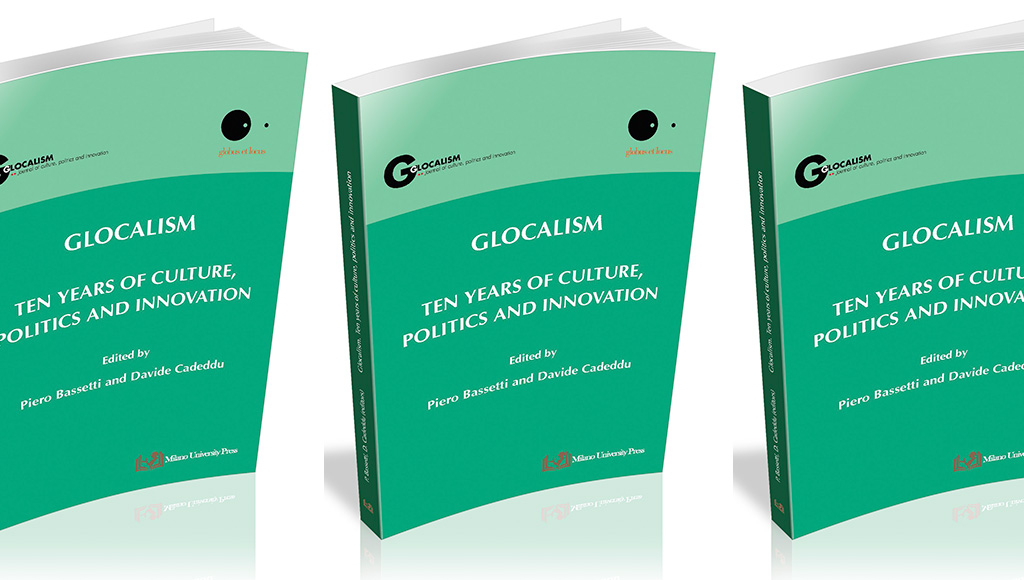To celebrate the ten-year anniversary of Glocalism: Journal of Culture, Politics and Innovation, Piero Bassetti (President of the Bassetti Foundation and Globus and Locus) and Davide Cadeddu (Editor in Chief of Glocalism) have edited an open access collection of articles for publication through Milan University Press.
In the editorial that precedes this collection, Bassetti, Cadeddu and Elia Zaru explain the journal’s mission to ‘stimulate an increasing awareness and knowledge around the idea of the characterising dynamics of glocal reality’. They describe their twofold aim in collecting the articles: to show the richness and depth that characterizes the journal and to stimulate developments on the path towards the definition of a general theory of glocalization.
The book is presented in three sections, Local, Global and Glocal, each of which contain three articles that have all appeared in the journal in the last five years.
Local
In Living in proximity in a living city, Carlos Moreno describes developments with the concept of the 15-minute city (a new urban ontology for a high societal quality of life). This new urban model aims at lowering carbon emission while improving social wellbeing, relying on six essential urban social functions: living with dignity, working while reducing commuting, buying supplies through short circuits, taking care of one’s physical and mental health in proximity, accessing education and culture, and blossoming in conditions of harmony and resilience with nature. The operational pillars of the model are: ecology, (low-carbon) proximity (new urban economic models to create value), solidarity (social links), and citizen participation (to embody this new urban culture).
In More than vestiges: photographic archives of ancient Mexico, John Mraz provokes the reader into thinking about how photography would have developed if it had existed during the time of the Spanish conquests in Mexico, what might have been documented, and which subject matter might have been used or hidden. He then describes its use once camera technology had been introduced on behalf of the French Ministry of Education, its later adoption by anthropologists and those looking for investment opportunities and eventually post-revolutionary Mexican governments themselves.
The economic geography of xenophobic populism: causes and implications from Colin Crouch closes this section, the author examining the geography of populism, its relationship to the geography of economic sectors and the kinds of public policy that are relevant to tackling emerging geographical inequalities. He describes a relationship between how positive or negative a population feels about the future and their likelihood to vote for a populist movement, with pessimism or uncertainty, types of industry present and education levels all factors that might be related to a feeling of being ‘left behind’ either today or in the future.
Global
The global section opens with Nation and civilization in the global age from Hans Köchler. While describing social organization as a framework of survival, the author outlines the importance of shared language and power for civilization in its development towards cultural refinement. After describing how the concept of nation succeeded the concept of civilization, he moves on to theorize the disentanglement of nation and state, the transformation of cultural identity in the global context into the virtual (digital) nation, and dialectics of diversity and uniformity in the commonwealth of civilizations. The author concludes by outlining four imperatives that would allow the evaluation of (and a reaction to) the threat to diversity at global level.
In History, modernity and global identities, Alain Touraine describes several stages of modern society, from monotheism through a second stage that links sacredness and political power to a third industrial society phase, explaining that we are now entering a new ‘society of communication’. Social actors must be “total” in this new stage, active in the cultural-mediatic domain as well as in the political and economic fields. He focusses on women, migrants and human rights, concluding that ethics will win over politics.
The Global section concludes with The haptic and the phatic in the era of globalization from Arjun Appadurai. In discussing the comparative dimension of the relationship between the haptic and the phatic, the author brings in drone warfare, tattooing, biometrics, and police restraint practices to a discussion of caste in Indian society, at a time in which ‘technology everywhere has seized the haptic faculty, severed it from the bodily sensorium and made the body itself a sort of prosthetic, designed for screens, cameras, tapping and being tapped, a fibrous optic of its own type’.
Glocal
The Glocal section opens with New glocal forms of financial participation from Jeff Hyman. Through this broad and wide-ranging discussion of participation, the author examines and challenges the roots of employee weakness, exploring the reality and potential for financial participation and worker emancipation in both commercial organizations and those not primarily driven by profit-seeking.
In What threat? The campaign against “gender ideology”, Judith Butler suggests that we ‘understand the historical formulation of neoliberalism and financialization (the imperative to increase assets at the expense of securing fair wages) not as the cause of the anti-gender ideology movement, but as part of the complex scene of heightened conflict where nationalism, racism, and heightened militarism ally with anti-gender ideology propaganda’.
In the final article, Glocalization: self-referential remembrances, Roland Robertson presents an autobiographical narrative overview of the ways in which he has experienced the development of the concept of glocalization and glocality throughout his academic career. The narrative traces a history of the concept’s use and adoption across time and space, and raises questions about its acceptance and refusal.
Glocalism. Ten Years of Culture, Politics and Innovation is an easy to read open access publication that can be downloaded here.
















